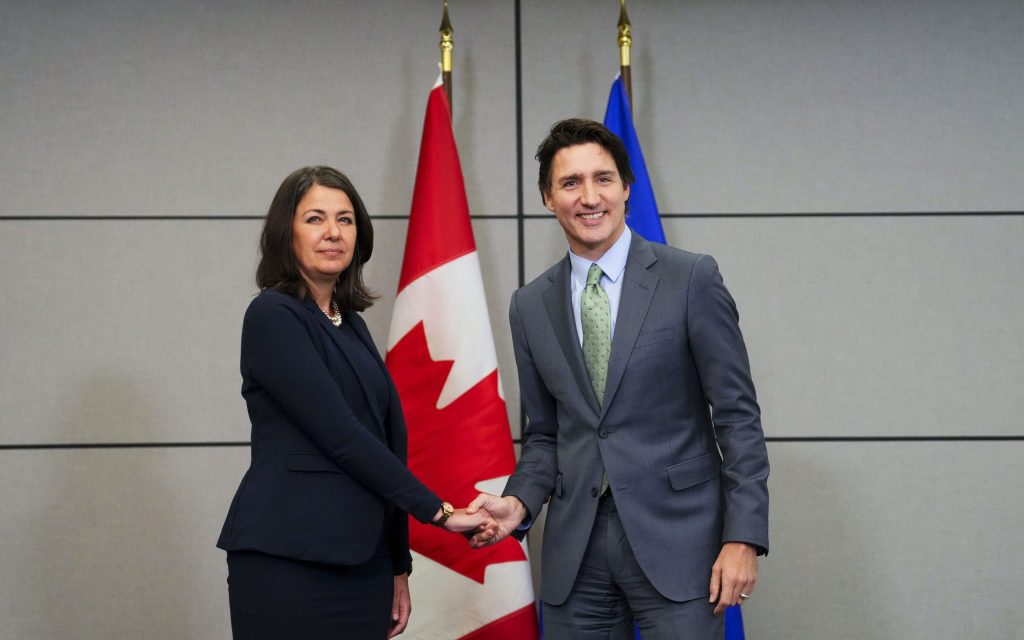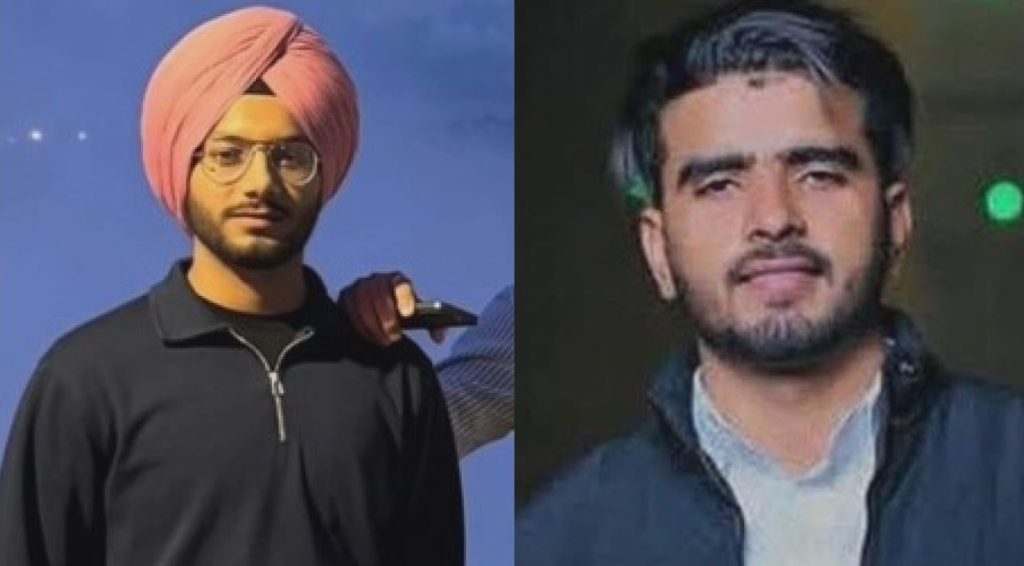Awkward handshake encapsulates Smith’s distrust for Trudeau: body language expert

Posted February 8, 2023 9:36 am.
The awkward handshake between Danielle Smith and Justin Trudeau proves the Alberta premier does not trust the Canadian prime minister and wants to hold information back from him, according to a body language expert.
Smith and Trudeau met briefly in Ottawa Tuesday with the nation’s other premiers for talks on health-care funding.
When Trudeau reached down to shake hands, Smith offered a hesitant palm-down hand in return, prompting Trudeau to take it and hold it in place with his thumb on top.
BACKGROUND: Alberta Premier Smith meets Prime Minister Trudeau; awkward handshake ensues
Mark Bowden, an author on body language and human behavior, suggests Smith came into the meeting with the intention of not shaking the prime minister’s hand.
“Handshaking in our North American western culture is a pattern,” said Bowden. “If I hold out my hand, there’s an unconscious cultural move for somebody to bring their hand up towards mine. If we’re in the same culture, you have to try really hard when somebody tries to create that pattern not to join in with that pattern.
“You can see that Smith, in this particular case, is kind of late to joining in the pattern. So clearly beforehand, she’s worked out, ‘I’m not going to shake hands with this person. That’s the signal I’m going to give.’”
Bowden says universally, handshakes are used as a symbol of trust. Both parties raise their hands at an appropriate height – near the belly button – with palms facing outwards.
But that’s not what happened.
“Trudeau holds out his hand very definitively, and there is a time lag, as Smith brings her hand towards him, but not really far enough, not high enough, not into what I would call the truth plane – the horizontal plane at the navel area, which is more visible,” said Bowden.
“The handshake happens down in what I would call the grotesque plane, it’s more covert down there, it’s more hidden. So it’s a covert handshake.”
WATCH: Awkward handshake between Smith and Trudeau
Bowden says historically handshakes were in part used to show that the parties’ hands were free of weapons or tools. Smith’s palm-down approach does not accomplish that, he says.
“Smith’s hand is up, is palm down, which means you can’t see what’s in the hand, and Trudeau can’t really feel what’s in the hand,” he said. “And therefore, you can’t tell if there are tools or weapons in there. I know there aren’t any tools or weapons in there in this case, but that’s the ritualized form of the handshake is you get to hold each other’s flesh in an open way and detect what do they have in their hand.
“In this particular situation? Trudeau is on the backfoot essentially. He can’t really feel the fullness of the flesh of the hand, the hand is hidden.”
Alberta premier at odds with Trudeau
The tension between Smith and Trudeau is well documented, with the Alberta premier harnessing party anger with the prime minister to win the United Conservative Party leadership race.
She has disparaged Trudeau’s government as not a true national government and passed controversial legislation granting her government power to direct provincial agencies to ignore federal laws.
She has accused his government of imposing discriminatory policy decisions and legislation on non-renewable resource development that she says is frustrating Alberta’s energy sector.
RELATED: Trudeau says Ottawa to work constructively with Alberta after sovereignty act passes
And she has accused Trudeau of trying to decimate Alberta’s oil and gas industry with the “Just Transition” legislation.
For those reasons, Bowden suggests Trudeau could have gone into their meeting less determined to shake Smith’s hand.
“Trudeau should pretty much know at this point that he’s not going to get a warm reception,” said Bowden. “Maybe he shouldn’t hold his hand out at all, at this point, knowing that he’s going to get this kind of news going on. If the patterns don’t play out, he’s not going to look good.
“She’s looking a little more powerful at this point.”
—With files from The Canadian Press








